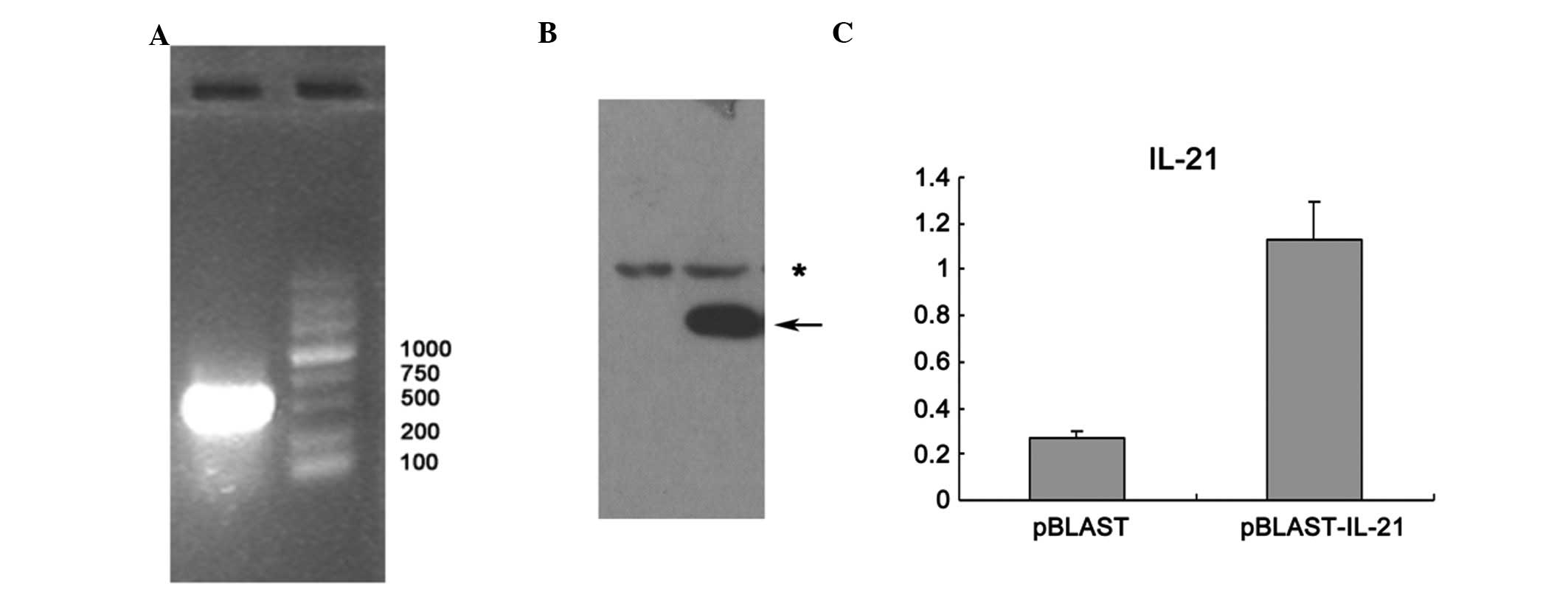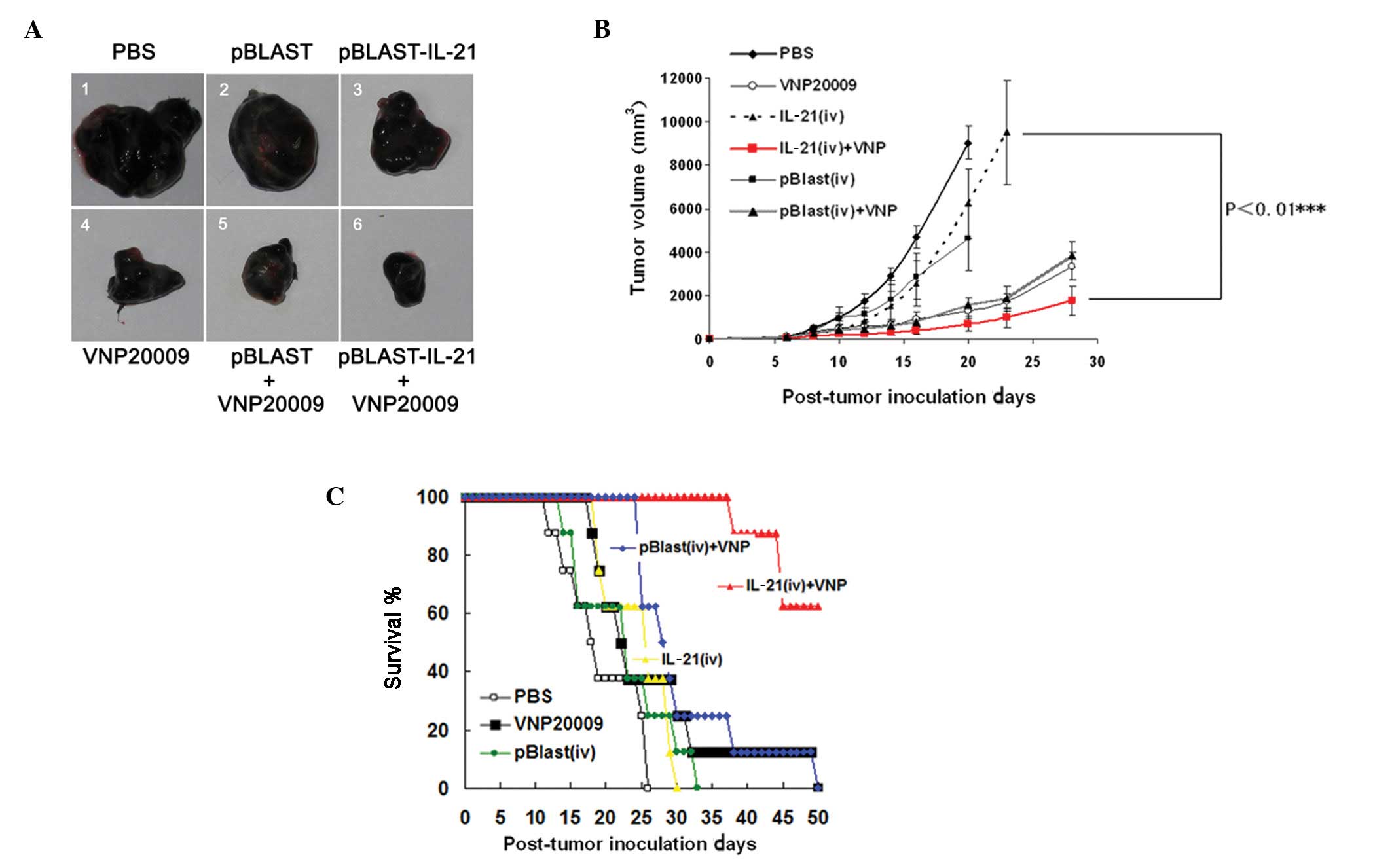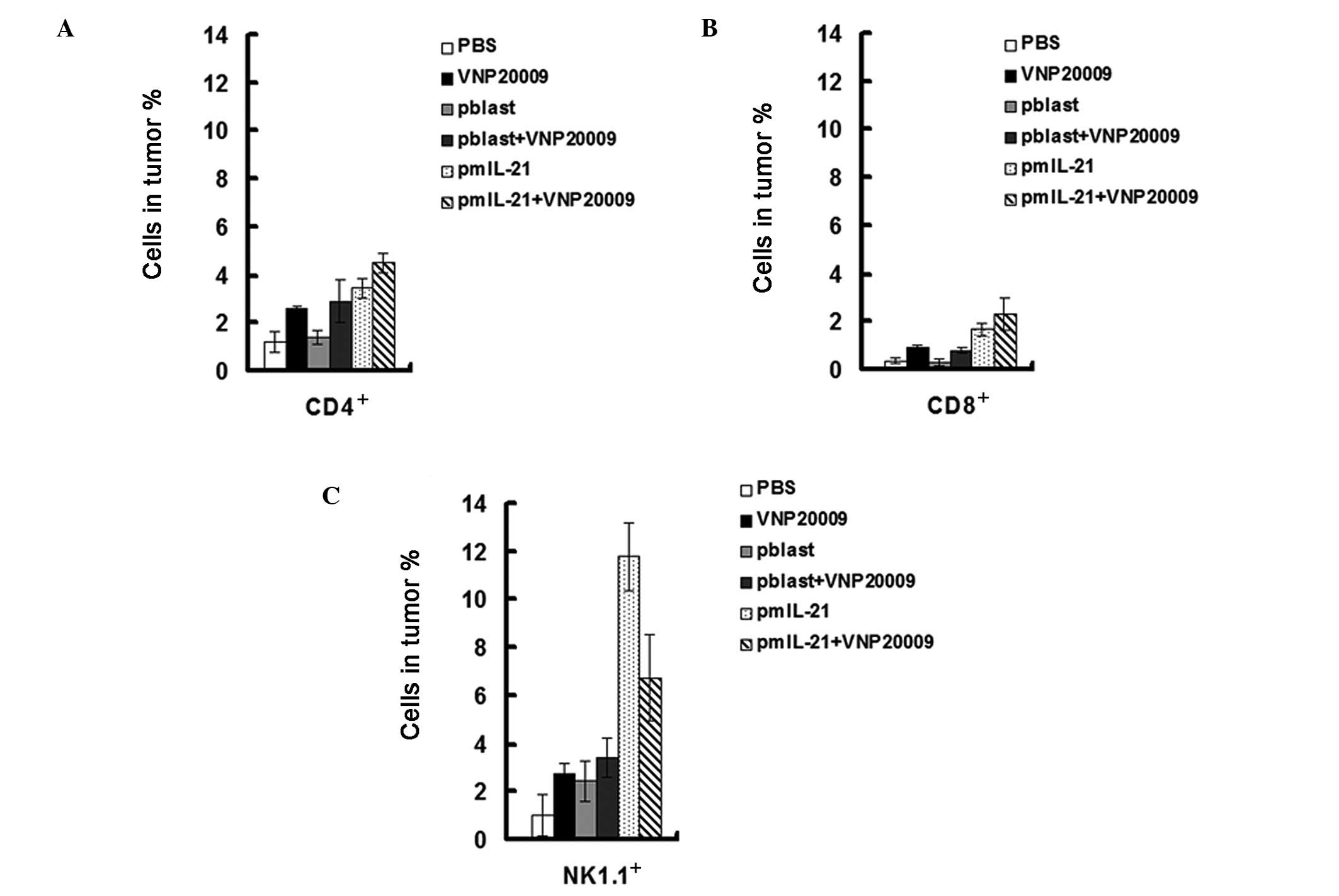|
1.
|
Dachs GU, Patterson AV, Firth JD, et al:
Targeting gene expression to hypoxic tumor cells. Nat Med.
3:515–520. 1997. View Article : Google Scholar : PubMed/NCBI
|
|
2.
|
Pouyssegur J, Dayan F and Mazure NM:
Hypoxia signalling in cancer and approaches to enforce tumour
regression. Nature. 441:437–443. 2006. View Article : Google Scholar : PubMed/NCBI
|
|
3.
|
Brown JM and Giaccia AJ: The unique
physiology of solid tumors: opportunities (and problems) for cancer
therapy. Cancer Res. 58:1408–1416. 1998.PubMed/NCBI
|
|
4.
|
Graham CH, Forsdike J, Fitzgerald CJ and
MacDonald-Goodfellow S: Hypoxia-mediated stimulation of carcinoma
cell invasiveness via upregulation of urokinase receptor
expression. Int J Cancer. 80:617–623. 1999. View Article : Google Scholar : PubMed/NCBI
|
|
5.
|
Leschner S and Weiss S: Salmonella-allies
in the fight against cancer. J Mol Med (Berl). 88:763–773. 2010.
View Article : Google Scholar : PubMed/NCBI
|
|
6.
|
Luo X, Li Z, Lin S, et al: Antitumor
effect of VNP20009, an attenuated Salmonella, in murine tumor
models. Oncol Res. 12:501–508. 2001. View Article : Google Scholar : PubMed/NCBI
|
|
7.
|
Pawelek JM, Low KB and Bermudes D:
Tumor-targeted Salmonella as a novel anticancer vector. Cancer Res.
57:4537–4544. 1997.PubMed/NCBI
|
|
8.
|
Chen J, Wei D, Zhuang H, et al: Proteomic
screening of anaerobically regulated promoters from Salmonella and
its antitumor applications. Mol Cell Proteomics.
10:M111.0093992011. View Article : Google Scholar : PubMed/NCBI
|
|
9.
|
Jia LJ, Wei DP, Sun QM, Jin GH, et al:
Tumor-targeting Salmonella typhimuriumimproves
cyclophosphamide chemotherapy at maximum tolerated dose and
low-dose metronomic regimens in a murine melanoma model. Int J
Cancer. 121:666–674. 2007.PubMed/NCBI
|
|
10.
|
Chen G, Tang B, Yang BY, Chen JX, et al:
Tumor-targeting Salmonella typhimurium, a natural tool for
activation of prodrug 6MePdR and their combination therapy in
murine melanoma model. Appl Microbiol Biotechnol. Aug 7–2012, (Epub
ahead of print).
|
|
11.
|
Chen J, Yang B, Cheng X, et al:
Salmonella-mediated tumor-targeting TRAIL gene therapy
significantly suppresses melanoma growth in mouse model. Cancer
Sci. 103:325–333. 2012. View Article : Google Scholar : PubMed/NCBI
|
|
12.
|
Spolski R and Leonard WJ: Interleukin-21:
basic biology and implications for cancer and autoimmunity. Annu
Rev Immunol. 26:57–79. 2008. View Article : Google Scholar : PubMed/NCBI
|
|
13.
|
Sondergaard H and Skak K: IL-21: roles in
immunopathology and cancer therapy. Tissue Antigens. 74:467–479.
2009. View Article : Google Scholar : PubMed/NCBI
|
|
14.
|
Goluboff ET, Hirano D, Thrasher JB, Stark
G, Miller GJ and Glode LM: New approaches to the treatment of
advanced prostate cancer. Rev Urol. 3:S69–S78. 2001.PubMed/NCBI
|
|
15.
|
Patyar S, Joshi R, Byrav DS, Prakash A,
Medhi B and Das BK: Bacteria in cancer therapy: a novel
experimental strategy. J Biomed Sci. 17:212010. View Article : Google Scholar : PubMed/NCBI
|
|
16.
|
Low KB, Ittensohn M, Luo X, et al:
Construction of VNP20009: a novel, genetically stable
antibiotic-sensitive strain of tumor-targeting Salmonella for
parenteral administration in humans. Methods Mol Med. 90:47–60.
2004.
|
|
17.
|
Dang LH, Bettegowda C, Huso DL, Kinzler KW
and Vogelstein B: Combination bacteriolytic therapy for the
treatment of experimental tumors. Proc Natl Acad Sci USA.
98:15155–15160. 2001. View Article : Google Scholar : PubMed/NCBI
|
|
18.
|
Stolfi C, Pallone F, Macdonald TT and
Monteleone G: Interleukin-21 in cancer immunotherapy: friend or
foe? Oncoimmunology. 1:351–354. 2012. View Article : Google Scholar : PubMed/NCBI
|
|
19.
|
Stolfi C, Rizzo A, Franze E, et al:
Involvement of interleukin-21 in the regulation of
colitis-associated colon cancer. J Exp Med. 208:2279–2290. 2011.
View Article : Google Scholar : PubMed/NCBI
|
|
20.
|
Jauch D, Martin M, Schiechl G, et al:
Interleukin 21 controls tumour growth and tumour immunosurveillance
in colitis-associated tumorigenesis in mice. Gut. 60:1678–1686.
2011. View Article : Google Scholar : PubMed/NCBI
|
|
21.
|
Hodges BL and Scheule RK: Hydrodynamic
delivery of DNA. Expert Opin Biol Ther. 3:911–918. 2003. View Article : Google Scholar
|
|
22.
|
Romero NB, Benveniste O, Payan C, et al:
Current protocol of a research phase I clinical trial of
full-length dystrophin plasmid DNA in Duchenne/Becker muscular
dystrophies. Part II: clinical protocol. Neuromuscul Disord.
12:S45–S48. 2002. View Article : Google Scholar
|
|
23.
|
Budker V, Zhang G, Knechtle S and Wolff
JA: Naked DNA delivered intraportally expresses efficiently in
hepatocytes. Gene Ther. 3:593–598. 1996.PubMed/NCBI
|












